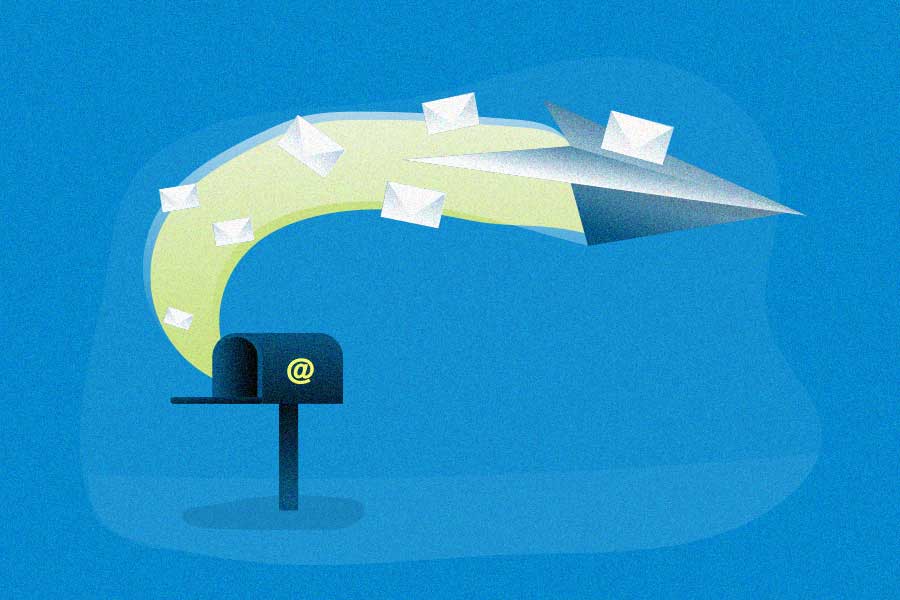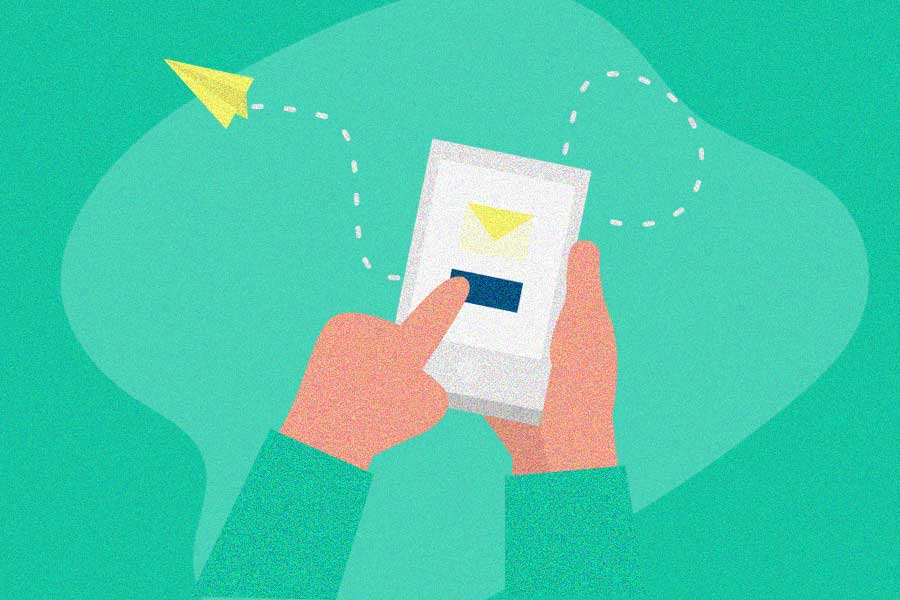If you’ve ever been invited to a referral program, you’ve come across a referral code example.
Referral programs are an awesome way to boost your business’ conversion rates through the power of trust. But how to know whether you’re getting the results you want? Unique referral codes easily track where all those newly referred customers come from.
Referral codes are used to track promotions and attribution from sources. They can be created with referral code generators or with a referral program software. Referral codes are sent to everyone who participates in the program (usually embedded within a referral link) and are an essential part of a well-run referral marketing campaign.
Jump to our Free Referral Code Generator>>
In this article, we’ll run through what a referral code is, how other companies use them, and how to create and distribute codes (either manually or with software). Let’s go!
For a quick run down, check out our explainer:
[Note: If you want to use referral codes to get a discount, and are looking for individual brands’ referral codes to apply at checkout, this isn’t the place for you! A resource like ReferCodes can help you find referral codes for different brands.]
What is a referral code?
A referral code (or referral tracking code) is a unique combination of characters used to identify the participants in a customer referral program.
Referral codes are assigned to every customer as soon as they’re invited to a program. They help connect each referral made to the person who sent it, as every participant in your program has their own distinct code. Participants will send their code to their friends as an invitation to check out your brand.
Once the friend enters the code at checkout (or clicks on a link with the code inside), boom – now you know exactly who sent the friend your way.
The main difference between a referral code and a typical discount code, promo code, or coupon code is that referral codes are linked to an individual person. So, referral codes let you track WHO a new customer is coming from, not just WHERE.
How referral codes make things easier
Referral codes make running a referral program and generating word-of-mouth marketing easier by:
- Streamlining referral attribution: The code identifies who sent each new referral (and who brought in each new customer) so you aren’t left guessing about the sources of new business.
- Allowing you to engage current customers as brand advocates on a larger scale: Instead of only relying on sales reps to ask for referrals, for example, you can empower your customers to share on their own with unique referral codes. They’ll become your own personal influencers!
And if you’re offering rewards to the referrer, their friend, or both, the code will show exactly who to reward and when.
Referral code vs. referral link
Referral codes and referral links are both ways to track referrals, but there are some key differences between the two.
- A referral code is a unique identifier, or set of numbers, that tracks who sent each referral. When people talk about referral codes, they usually mean the code by itself – a string of numbers people have to remember and enter on their own.
- A referral link is a unique link that customers share with friends via a referral program. It contains the URL that the referred friend is sent to, plus a unique referral code embedded inside (to identify who sent the referral/friend to your site). This way, friends don’t have to type the code – it’s already registered for them.
Referral codes are easy to generate and give out, but they aren’t as easy for people to remember and track. If you give referral program participants just a referral code (without any associated link), their friend will have to go to your site and enter it manually to give their peer credit for the referral.
What if referred friends forget or lose the code? If they don’t enter it, you might not realize they came to you via a referral. And if your sales cycle is longer, they’re more likely to forget when the time comes. Plus, with just a code, you’ll have to check back at your list to figure out who it’s associated with.
If you want your program to be fully automated, a better way to track referrals is to rely on unique referral links. These links already have the referral code embedded inside, instantly direct leads to you, and automatically track where a referral came from. Rather than having to manually log every participant and reward, a referral link helps to automate and track every step of your program.
For a successful referral program that meets your needs, the tracking method really matters (whether that’s a code by itself or a link with the code inside). Choose the one that best meets your needs.
Below, you can see how Doordash’s referral links contain a code at the end for referral tracking:
How does a referral code work?
Here’s how the referral code journey happens:
1. Create a referral program: As you may have guessed, you’ll need to first create a referral program (aka a refer-a-friend program) manually or with software.
- This involves choosing referral incentives and building a landing page or central spot for customers to join your program, as well as a place for referred customers to land.
- And if you aren’t using software to create codes automatically, you’ll need to make a set of referral codes and have them ready. Read on to find out how to create a referral code.
2. Assign customers a unique code: As soon as existing customers join your referral program, they should be issued and shown a unique referral code that they can access via email and a portal (or hub). This is a point of high engagement with your customer, and you want to help them start referring right away!
3. Ask customers to share their code: It’s easy for people to send referral codes to their network via email, social sharing, and messaging apps. But you’ll need to directly encourage this sharing. A big part of running a successful referral program is regular promotion and reminding people your program exists (and that there’s something in it for them!). Some of the most popular program promotion channels are email and in-app (after checkout, for example).
4. Track or collect the referral code during purchase: For online transactions, such as in e-commerce stores or subscriptions, new customers will simply enter their peer’s referral code during checkout and you’ll know who sent them. You can also create a dedicated landing page on your site to collect the referral code during purchase. For offline transactions, you can have the referral or your staff manually enter the code during the checkout process (which is why it’s best to keep in-person codes simple).
Note: Multi-step or enterprise sales processes often have a more complex referral process. Using referral program software (like Referral Rock!) can make the entire set-up and experience much easier, so you can reward or qualify referrals at different stages, e.g. giving one reward when a referral hits a “lead” stage in your CRM and another when they make a purchase.
5. Reward the referring customer and/or the referral (new customer): Once the purchase is confirmed, you can either manually send customers their rewards (e.g. gift cards, free products), or connect referral software with your CRM or e-commerce platform to trigger rewards based on certain actions (e.g. a checkout, or a “closed won” deal).
**Free referral code generator**
Check out our free referral code generator that can be used to make your own referral codes in an instant.
7 referral code examples
To give you a better picture of how a referral code works, let’s go over a few examples from companies with large customer bases that have used referral programs to fuel their growth.
Example 1: Zipcar
Zipcar’s referral program assigns each customer their own referral link, which they can instantly start sharing with others. As highlighted in the screenshot below, you can see the unique referral code is found at the end of the link — the whole link is easy to copy and paste so that customers can share it in an email, text, or on social.
Example 2: Airbnb
Airbnb is a company known for its popular referral program. In this referral code example, they combine the user’s name with a series of numbers to create a unique referral code that goes in a customer’s referral link.
Example 3: Ibotta
Ibotta, an app that lets you earn cash back for in-store and online purchases, is another company with a popular refer-a-friend program. However, this referral code example is a slightly different: It’s a unique code, without a link. With this type of referral code, the referral (the new user) has to download the company’s app and manually type in the code. The program also offers the option to invite friends through social media, which automatically adds the referral code to the new user’s first purchase (see more mobile app referral program examples).
Example 4: Dropbox
Dropbox is a tech company that grew to be a household name thanks to its popular referral program. Its dual-sided reward structure gives free storage space to both the referring customer and the referral. This motivates everyone to use the product and refer even more people!
This referral code example is a bit longer and more complex than the previous ones shown. But since Dropbox runs a purely online product and referral program, customers don’t have to worry about manually typing in the code — they can simply copy and paste their personal referral link and send it to their friends and family members.
Example 5: TabbedOut
TabbedOut, an app that makes it easier and more secure to pay tabs at bars and events, translates this ease to their referral program. It’s super easy for customers to tap and copy their referral code, which is front and center on the app’s referral page. Plus, customers can also use the sharing buttons to instantly send their code through email and social media.
Example 6: Morning Brew
Morning Brew is a daily email that invites subscribers to share the good news with others. A subscriber’s referral status is included at the bottom of every email, along with a “Click to Share” button and easy-to-copy referral code. Like most of the online referral code examples we’ve seen, Morning Brew’s code is placed at the end of a referral link. Since the referral process is completely online, subscribers may not even notice the referral code. They can simply share the link on their medium of choice (email, text, social) or hit a button to access their rewards hub.
Example 7: Lyft
Here’s an example from Lyft, with the name at the front of the link and the code at the end (referral programs with coupons or credits are a super common marketing tactic among ride-sharing apps like Lyft and Uber!).
How to create a referral code
There are four main ways you can generate referral codes for your customers:
- Manually create referral codes and track them in a spreadsheet
- Use our free referral tracking tool
- Use our free referral code generator
- Automatically generate and track referral codes with dedicated software (such as Referral Rock)
Manually tracking codes using a spreadsheet can be time-consuming. We recommend using our free Random Code Generator and Referral Tracking Tool. The generator creates unique codes while the tracking tool simplifies the tracking and management of referrals.
Be sure to keep an updated record of all your referral codes. You can create a spreadsheet, or use accounting software or a CRM (our free referral tracking tool auto-generates codes in Airtable).
For more on easily tracking your referrals (including with referral codes and links), check out our in-depth guide to referral tracking >
Or, if you’re ready to fully automate referral codes, turn to Referral Rock. In Referral Rock, codes are generated automatically when you add customers to your program. You can issue customers a randomly generated referral code, a personalized code based off of their first name, or a personalized code based off their first name including a set prefix. The software keeps track of every referral code, and the ROI generated through each code, for you.
![Referral Codes Explained for Businesses [+ Free Generator] 10 Referral code generator in Referral Rock](https://referralrock.com/blog/wp-content/uploads/2021/05/referral-code--300x122.png)
Referral code best practices
No matter how you go about creating referral codes, here are some best practices to follow:
- Keep the code easy to read and case insensitive.
- Try not to use O’s, zeros, ones, capital I’s, or lower case L’s. These are easily confused with one another.
- Personalize the referral code for the customer, not the brand.
- Keep the referral code short enough to be memorable, but long enough to be unique.
- Keep your referral codes in the same format for each of your referral programs.
Generate referral codes with our free referral tracking template
Free download nowIs a referral code required to run a referral program?
Technically, no. But if you’re dealing with a bigger number of customers and referrals, it’s highly recommended. Imagine having to track of every customer who joins your program, and every referred friend they send to your business. You also need to check which referred friend actually ends up making a purchase, and immediately reward the referring customer.
No matter how simple your referral marketing strategy is, there are a lot of details to take care of so it runs smoothly. Referral codes can automate most of these steps for you and make your program more scalable. They also formalize your referral marketing program, make sure all the rewards are sent on time, and establish more customer loyalty and trust, even if you choose to not use extra graphic designs or software.
Common referral code questions from customers
Once you launch your referral program, it’s normal to get questions about how it works or where customers can get their referral codes. To reduce customer confusion, we recommend putting together a referral program FAQ or link to a knowledge base on your customer referral program landing page. Include any screenshots or images that will help your customers better understand the referral process. (Some businesses also find it helpful to create a few FAQ explainer videos.)
Giving loyal customers all they need to know about your referral program will not only save you time on customer support inquiries, it’s also a great way to refine all the smaller details of your referral program before launch. Here are a few common questions to include about referral codes:
- How do I get my referral code?
- Where do I enter my referral code?
- How do I share my referral code?
- What if I forget or lose my referral code?
- Where can I promote my referral code?
- Will I be notified when someone uses my referral code?
- What if a customer I referred forgets to use my referral code?
- How do I collect and track my rewards?
Note: Some of the above questions might not be relevant to your referral program. Run through the list and only include the ones that will be of help to your customers!
Take the next steps in starting a referral program
Referral codes are a key component in the best referral programs. Without them, it’s hard for marketers to track new referral customers (and the brand awareness they generate!) and give participants the referral rewards they deserve.
Now that you know more about referral codes, and have seen some examples, it’s time to start thinking about the best ways to integrate them into your own referral program or digital marketing campaigns. Here are a few resources to help:
- Learn more about building a customer referral program using software
- See how home technology company CoolBot uses referral codes to turn customers into brand ambassadors
- Compare different referral software to find an option that’s right for your business

![Referral Codes Explained for Businesses [+ Free Generator] 1 Doordash referral code example](https://referralrock.com/blog/wp-content/uploads/2018/03/doordash-referral-link.jpg)
![Referral Codes Explained for Businesses [+ Free Generator] 2 referral code generator](https://referralrock.com/blog/wp-content/uploads/2024/03/referral-code-generator.jpg)
![Referral Codes Explained for Businesses [+ Free Generator] 3 zipcar's-referral-code-example](https://referralrock.com/blog/wp-content/uploads/2018/05/zipcars-referral-code-example.jpg)
![Referral Codes Explained for Businesses [+ Free Generator] 4 airbnb-referral-code-example](https://referralrock.com/blog/wp-content/uploads/2018/05/airbnb-referral-code-example.jpg)
![Referral Codes Explained for Businesses [+ Free Generator] 5 ibotta-referral-code-example](https://referralrock.com/blog/wp-content/uploads/2018/05/ibotta-referral-code-example.jpg)
![Referral Codes Explained for Businesses [+ Free Generator] 6 dropbox-referral-code-example](https://referralrock.com/blog/wp-content/uploads/2018/05/dropbox-referral-code-example.jpg)
![Referral Codes Explained for Businesses [+ Free Generator] 7 tabbed-out-image](https://referralrock.com/blog/wp-content/uploads/2019/12/tabbed-out-image.jpg)
![Referral Codes Explained for Businesses [+ Free Generator] 8 morning brew referral code example](https://referralrock.com/blog/wp-content/uploads/2018/05/morning-brew-referral-code-example.png)
![Referral Codes Explained for Businesses [+ Free Generator] 9 Lyft referral program](https://referralrock.com/blog/wp-content/uploads/2021/05/Lyft-referral-example.png)



